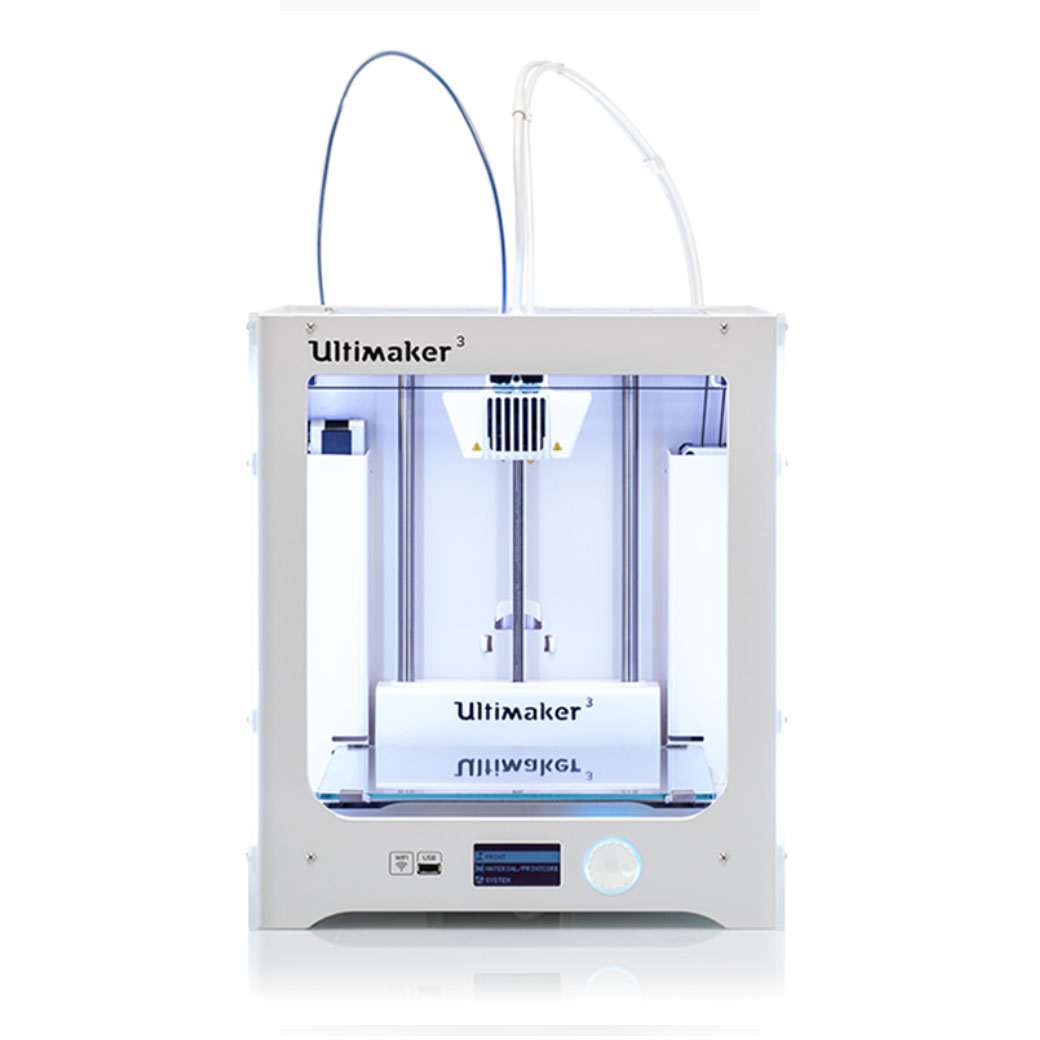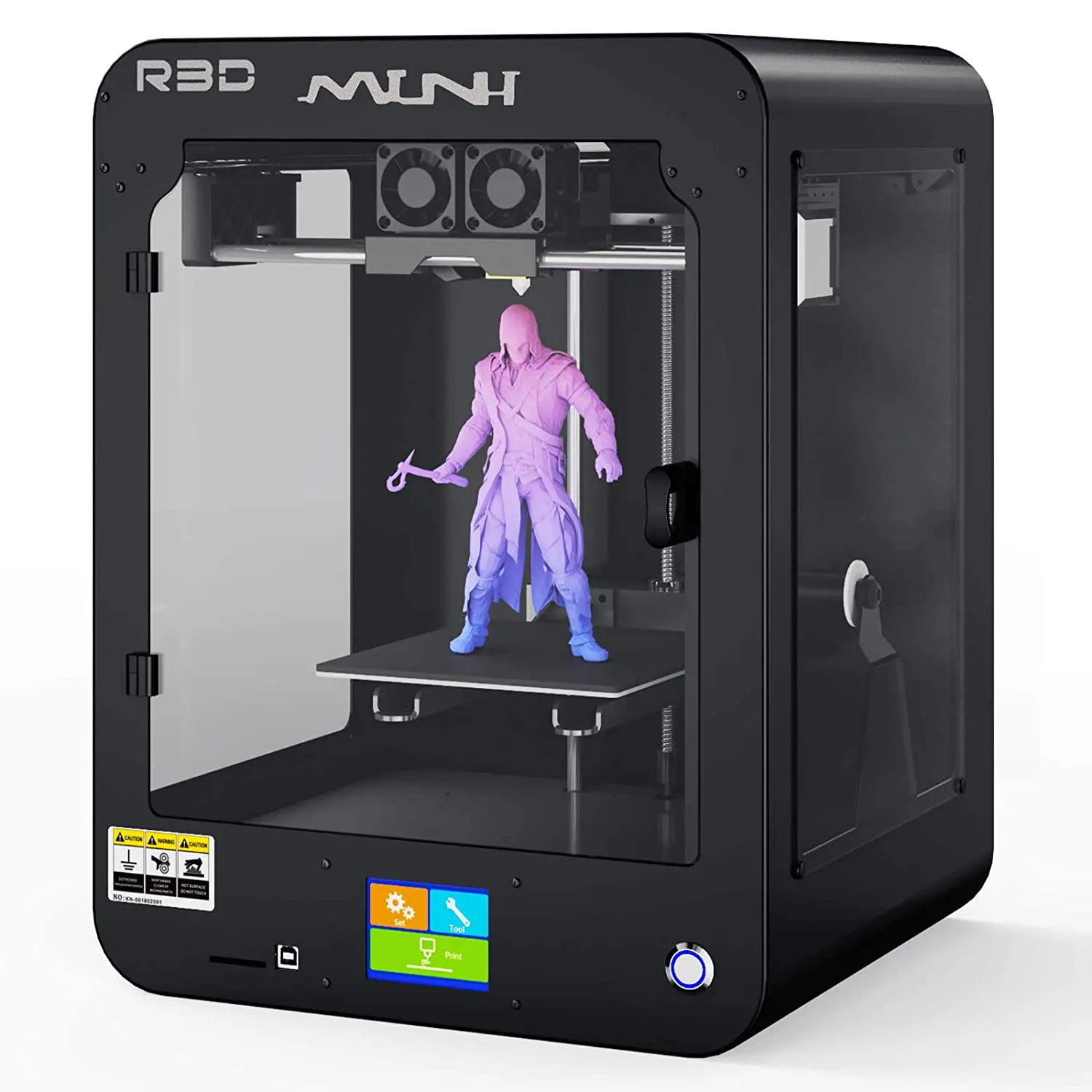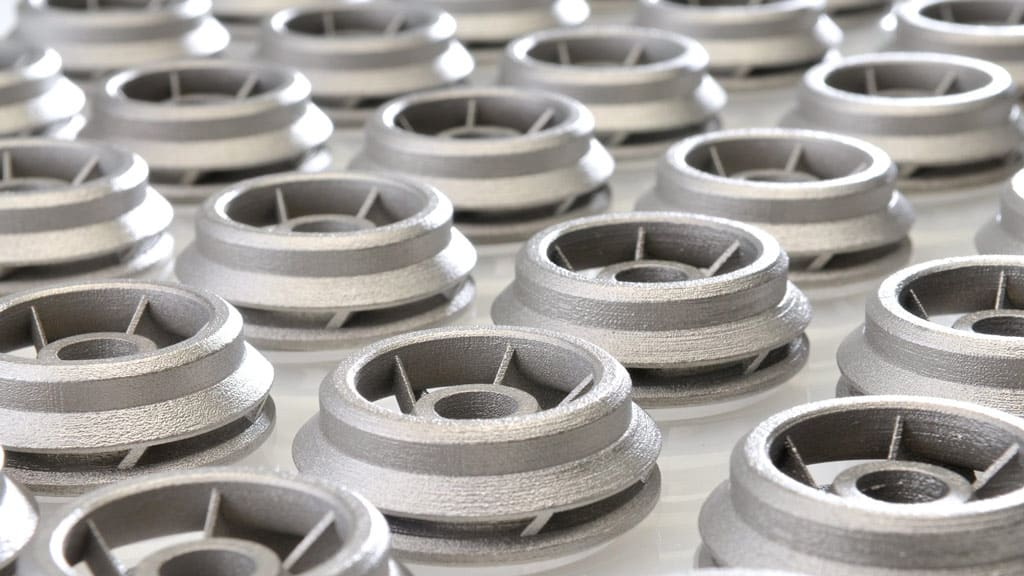Metal 3D printers are revolutionizing the landscape of manufacturing, particularly within the military sector. As part of a groundbreaking initiative, the Royal Australian Navy will utilize a metal 3D printer in a world-first trial aimed at enhancing supply chain efficiency for maintenance of patrol vessels. This innovative approach employs SPEE3D’s Supersonic Deposition technology, which not only accelerates the production of metal parts but also significantly reduces costs compared to traditional manufacturing methods. Defence Industry Minister Melissa Price emphasizes that this pilot program, costing $1.5 million over two years, will dramatically increase the availability of critical components when compared to conventional supply chains. With the applications of 3D printing technology expanding rapidly, this trial represents a major leap forward in additive manufacturing for military operations.
Looking at advanced manufacturing solutions, additive manufacturing processes, such as those deployed by the Royal Australian Navy, are transforming the way metal components are produced. In this pioneering venture, a metal additive printer from SPEE3D will play a crucial role in improving logistical operations for maintenance activities. Utilizing innovative cold spray technology, this 3D printing mechanism allows for the expedited creation of high-quality parts, bypassing lengthy delays associated with traditional production methods. By harnessing these modern fabrication techniques, the Navy aims to optimize supply chains and enhance operational readiness. This forward-thinking approach not only showcases the capabilities of 3D printing but sets a new standard for efficiency in various sectors.
The Role of Metal 3D Printers in Modernizing the Royal Australian Navy
The deployment of a metal 3D printer by the Royal Australian Navy marks a revolutionary step in the utilization of advanced manufacturing technologies within defense operations. This initiative, touted as a world-first trial, underscores the growing importance of 3D printing technology in military applications. Specifically, the Supersonic Deposition 3D printer from SPEE3D aims to streamline maintenance processes for patrol vessels, significantly improving the turnaround times for required parts and components, which traditionally would have been sourced through conventional supply chains.
With the $1.5 million investment in the pilot program, the Royal Australian Navy is positioning itself at the forefront of additive manufacturing practices, showcasing how metal 3D printers can enhance operational efficiency. By integrating such innovative technologies, the Navy not only reduces dependency on external suppliers but also accelerates the availability of critical components, enabling vessels to be mission-ready more rapidly. This strategic approach aligns with the broader trend towards modernization and efficiency in military operations, emphasizing the need for adaptable supply chain solutions.
Understanding Additive Manufacturing and its Impact on Supply Chains
Additive manufacturing, or 3D printing, has reshaped traditional manufacturing landscapes by introducing methods that drastically reduce time and costs associated with producing complex metal parts. The Royal Australian Navy’s decision to adopt metal 3D printing is a testament to the growing recognition of its potential to improve supply chain efficiency. By utilizing SPEE3D’s advanced printing technology, the Navy aims to create vital components in-house, bypassing delays often associated with conventional manufacturing processes.
The impact of such technology extends beyond immediate operational benefits. As the Royal Australian Navy and other military branches explore additive manufacturing, they pave the way for wider adoption in the commercial sector. Companies looking to improve inventory management and reduce lead times can benefit significantly from insights gained through military applications of 3D printing technology. This collaborative evolution represents a significant step towards a more dynamic and responsive supply chain.
SPEE3D: Revolutionizing Metal Additive Manufacturing
SPEE3D’s contributions to metal additive manufacturing promise to redefine how industries perceive production timelines and costs. Their innovative Supersonic Deposition technology not only achieves rapid production of metal parts but does so with a focus on affordability and efficiency. Utilizing kinetic energy instead of conventional lasers allows SPEE3D’s machines to produce industrial-quality components in a fraction of the time—minutes instead of days—effectively reshaping expectations around rapid prototyping and production in both military and commercial sectors.
Moreover, the partnership between SPEE3D and Charles Darwin University highlights an important connection between industry and academia, fostering research and development in advanced manufacturing. This synergy is essential for enhancing the capabilities of 3D printing technology, ensuring that it meets the demands of a rapidly changing market. As SPEE3D continues to advance its processes, the implications for supply chain management are profound, with potential reductions in costs and lead times across various sectors.
The Future of 3D Printing in Military Applications
As 3D printing technology continues to mature, its applications within the military sector are expanding beyond merely prototyping. The Royal Australian Navy’s pilot program is indicative of this trend, signaling a shift toward reliance on advanced manufacturing techniques for real-time, on-demand production of metal components. The implications of this development are vast, ranging from enhanced readiness and support for naval operations to increased operational autonomy.
Looking ahead, the integration of metal 3D printers into various military branches is likely to influence innovation in logistics and support operations. The agility afforded by such technologies enables a more responsive approach to maintenance and part replacement, ultimately allowing for better allocation of resources and personnel. As more branches of defense embrace additive manufacturing, we can expect significant advancements in military logistics and supply chain efficiency.
The Economic Benefits of Metal 3D Printing
Metal 3D printing is not only transforming production processes but also presenting significant economic benefits for organizations like the Royal Australian Navy. By manufacturing parts on-site, the Navy can significantly lower inventory costs and reduce the burden of warehousing and stock management. This capability to produce components as needed translates into a more cost-effective approach to maintenance and repairs, which is particularly valuable for a military that operates under strict budget constraints.
Moreover, the implications for local economies cannot be overlooked. The use of advanced additive manufacturing technologies can stimulate job creation in engineering, manufacturing, and supply chain management sectors. As the Royal Australian Navy invests in these technologies, it supports local industries and fosters innovation, thus boosting the overall economic landscape and stimulating advancements in related fields.
Environmental Implications of Additive Manufacturing
The adoption of metal 3D printing within the Royal Australian Navy also carries significant environmental implications. Traditional manufacturing methods often produce high levels of waste through subtractive methods, where excess material is discarded during the production process. In contrast, additive manufacturing minimizes material waste by utilizing only what is necessary to create a component, leading to a more sustainable production cycle.
By implementing SPEE3D’s technology, the Navy can lower its carbon footprint associated with logistics and transport, as parts can be fabricated on-site. This reduction in the need to transport components from centralized manufacturing facilities to naval bases not only conserves energy but also decreases emissions related to shipping. As environmental considerations become increasingly critical in defense and manufacturing, additive manufacturing stands out as a pivotal solution.
Challenges and Solutions in Metal 3D Printing Implementation
Despite the numerous advantages of adopting metal 3D printing, challenges remain in implementing this technology within the Royal Australian Navy. Issues such as ensuring the reliability and quality of printed parts must be addressed, as any failures can disrupt operations. Additionally, integrating advanced 3D printing into existing workflows requires thorough training for personnel to familiarize them with innovative processes and equipment.
To mitigate these challenges, ongoing partnerships with technology providers like SPEE3D are essential. Continuous investment in training and development ensures that Navy personnel are well-equipped to operate and maintain new 3D printers efficiently. Furthermore, establishing rigorous quality control measures will help maintain standards and reliability, ultimately enhancing the overall efficacy of additive manufacturing within the Navy.
The Global Landscape of 3D Printing Technology
The Royal Australian Navy’s initiative to employ a metal 3D printer aligns with a global trend where military organizations are increasingly recognizing the importance of 3D printing technology. Countries around the world are investing in advanced manufacturing not only to modernize their fleets but also to gain a strategic advantage in defense capabilities. This global landscape of 3D printing suggests that as one nation adopts these technologies, others are sure to follow suit, enhancing overall military preparedness.
International partnerships and collaborations in the field of 3D printing can facilitate knowledge transfer and innovation. By sharing best practices and technological advancements across borders, nations can benefit from collective experiences and further refine their manufacturing capabilities. As 3D printing continues to evolve, its position within global defense strategy becomes more pronounced, shaping the future of military logistics on a worldwide scale.
Significance of the Advanced Manufacturing Alliance
The establishment of the Advanced Manufacturing Alliance (AMA) between SPEE3D and Charles Darwin University signifies a vital step towards fostering innovation in Australia’s manufacturing landscape. By combining academic prowess and industry expertise, the AMA is set to advance research and development related to additive manufacturing technologies further. This partnership aligns with the Royal Australian Navy’s initiative, enhancing its commitment to integrating cutting-edge technologies into its operational framework.
Through the AMA, researchers and engineers can collaborate on projects aimed at refining precision in manufacturing and enhancing the overall capability of metal 3D printers. This symbiosis of knowledge and experience propels Australia forward in the global arena of advanced manufacturing, thus setting the stage for future innovations that will not only benefit the Navy but also influence civilian manufacturing practices, demonstrating the far-reaching impact of such alliances.
Frequently Asked Questions
What is a metal 3D printer and how does it work?
A metal 3D printer uses additive manufacturing techniques to create metal parts layer by layer. Utilizing technologies like the one implemented by SPEE3D, it employs a cold spray process that harnesses kinetic energy instead of high-power lasers. This allows for fast production of durable metal components, significantly enhancing supply chain efficiency.
How is the Royal Australian Navy using metal 3D printers?
The Royal Australian Navy is conducting a world-first trial by deploying a metal 3D printer as part of a pilot program worth $1.5 million. This initiative aims to streamline the maintenance of patrol vessels by producing metal parts on-demand, thus increasing the availability of crucial components compared to traditional supply chains.
What advantages does additive manufacturing provide over conventional methods?
Additive manufacturing, particularly through metal 3D printing, offers several advantages including reduced production times, lower costs, and improved supply chain efficiency. Technologies like those developed by SPEE3D allow for the rapid creation of industrial-quality metal components, thus minimizing delays in repairs and maintenance.
What technology does SPEE3D’s metal 3D printer use?
SPEE3D’s metal 3D printer employs a unique cold spray technology that relies on kinetic energy to produce parts quickly and affordably. This innovative approach contrasts with traditional methods that often require high-energy input like lasers, enabling the production of metal components in just minutes.
How does the Advanced Manufacturing Alliance contribute to metal 3D printing research?
The Advanced Manufacturing Alliance (AMA), established by SPEE3D and Charles Darwin University, focuses on advancing research and development in additive manufacturing technologies. The alliance aims to improve the capabilities of metal 3D printers, fostering innovations that enhance efficiency in manufacturing processes for industries including the military.
What impact do 3D printed metals have on supply chains?
3D printed metals, particularly in military and commercial sectors, are poised to become crucial components in supply chains for replacement parts. They streamline production and reduce the reliance on traditional supply chains, as seen in initiatives by the Royal Australian Navy to improve operational efficiency.
Can you explain the significance of the trial program using metal 3D printers by the Royal Australian Navy?
The significance of the Royal Australian Navy’s trial program with metal 3D printers lies in its potential to revolutionize part manufacturing and maintenance. By enhancing supply chain efficiency and enabling rapid production of parts, this program can ensure that naval vessels spend less time offline, ultimately improving operational readiness.
What are the future prospects of metal 3D printing in industry?
The future prospects for metal 3D printing are promising, especially as industries recognize its potential for reducing production times and costs while improving supply chain efficiency. As technologies like SPEE3D evolve, their applications in various sectors including military, aerospace, and manufacturing are expected to expand significantly.
| Key Point | Details |
|---|---|
| Deployment of Metal 3D Printer | The Royal Australian Navy will conduct a world-first trial with a metal 3D printer. |
| Pilot Program Duration and Cost | The pilot program will last for two years and cost $1.5 million. |
| Manufacturer Details | SPEE3D, based in Darwin, developed the Supersonic Deposition 3D printer. |
| Advantages of the Printer | Enhances the availability of parts for patrol vessels compared to traditional supply chains. |
| Technology Overview | Uses kinetic energy instead of high-power lasers for the fastest metal part production. |
| Partnership for Advancement | SPEE3D has partnered with Charles Darwin University to form the Advanced Manufacturing Alliance (AMA). |
| Future Implications | This initiative is expected to benefit both the Navy and the manufacturing industry by facilitating rapid production. |
| Market Predictions | Gartner predicted 3D printed metals to become vital in supply chains for replacement parts. |
Summary
The metal 3D printer represents a revolutionary step forward for the Royal Australian Navy, marking a significant innovation in naval maintenance and operations. By utilizing SPEE3D’s advanced technology, the Navy aims to significantly improve the supply chain for essential parts and minimize downtime for mission-critical vessels. This pioneering initiative not only enhances the efficiency of military logistics but also sets a precedent for future applications of metal 3D printing across various industries, potentially transforming how critical components are produced and delivered.


